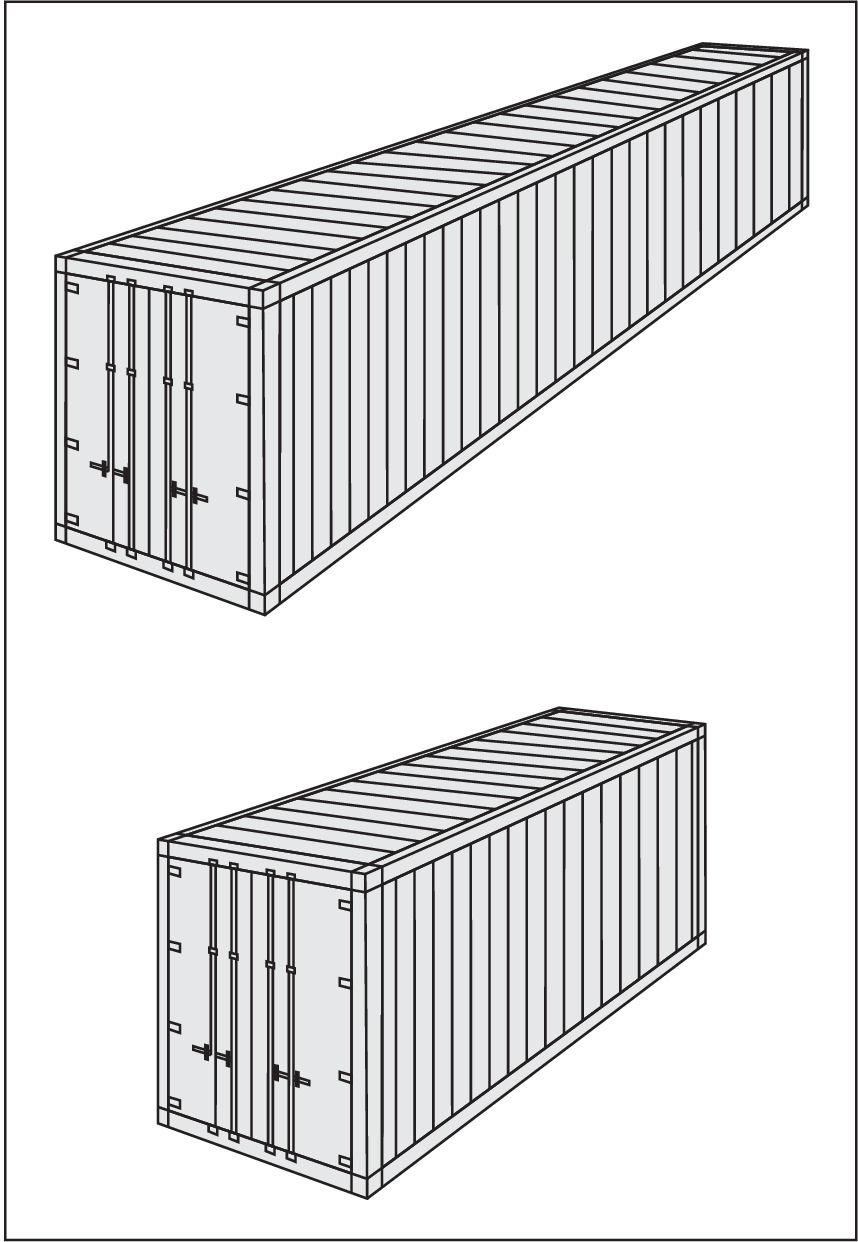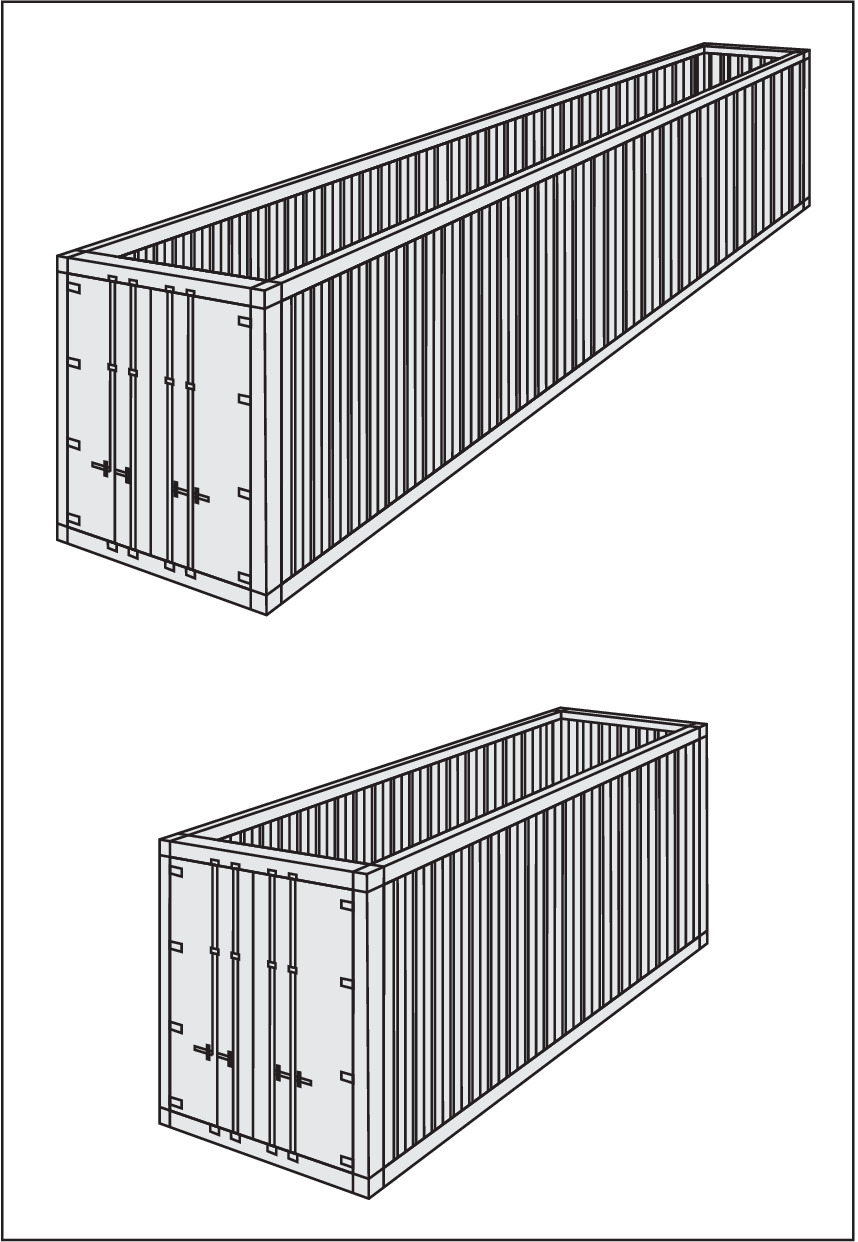Choosing the right container: a guide to types and features
Choosing the right container is critical for shipping, as it can affect safety, speed and transportation costs. With so many options available, it can be difficult to choose the right container for your specific needs. In this article, we will explore the different types of containers and their advantages and disadvantages to help you make the right decision.
Standard Container vs Reefer Container
The choice between standard containers and reefer units depends mainly on the nature of the goods to be transported and your storage needs. Here are the main features of both solutions.
Standard Container (Dry Container)
 Dry containers are the most common and account for about 90 percent of shipments. They are used to transport general cargo and are available in 20- and 40-foot sizes. Advantages of standard containers include:
Dry containers are the most common and account for about 90 percent of shipments. They are used to transport general cargo and are available in 20- and 40-foot sizes. Advantages of standard containers include:
- Economical: they are the most economical choice for transporting general goods
- Versatile: they can be used to transport a wide range of goods
- Easy to find: they are widely available and can be easily rented or purchased
However, standard containers are not suitable for transporting perishable goods or goods that require a specific temperature.
Reefer Container
 Reefer containers are used to transport perishable goods such as fruits, vegetables, meat and pharmaceuticals. They ensure temperature stability between -25 and +25°C. Advantages of reefer units include:
Reefer containers are used to transport perishable goods such as fruits, vegetables, meat and pharmaceuticals. They ensure temperature stability between -25 and +25°C. Advantages of reefer units include:
- Temperature maintenance: they can maintain a constant internal temperature, ensuring the quality of goods
- Safety: they are designed to transport perishable goods safely and hygienically
- Flexibility: they can be used to transport a wide range of perishable goods
However, reefer containers are more expensive than standard containers and require more maintenance.
Which container to choose: standard or refrigerated?
When to choose a dry container:
- When transporting general cargo that does not require a specific temperature
- When looking for an economical solution for transporting goods
When to choose a reefer container:
- When transporting perishable goods that require a specific temperature
- When looking for a safe and hygienic solution for transporting perishable goods
High Cube Container vs Standard Container
Size and cargo capacity are crucial factors when choosing a container. We compare the two main options available on the market.
High Cube Containers
High Cube units are taller than standard containers, offer greater volume, and are available in 20- and 40-foot sizes. Advantages of High Cube containers include:
- Higher volume: they can carry more goods than standard containers
- Flexibility: they can be used to transport goods that require more vertical space
- Economical: they can be cheaper than standard containers for transporting bulky goods
However, High Cube containers are more expensive than standard containers and may require more maintenance.
Standard vs High Cube: guide to choosing
When to choose a High Cube container:
- When transporting goods that require more vertical space
- When looking for an economical solution for transporting bulky goods
When to choose a dry container:
- When transporting general cargo that does not require more vertical space
- When looking for an economical solution for transporting general cargo
Special Containers: Flat Rack, Open Top and Open Side
For special cargo or with specific loading and unloading requirements, special units offer customized solutions. Let’s look at the main types.
Flat Rack Containers
Flat Rack units are used to transport bulky or oversized goods, such as machinery and vehicles. They have no side walls or top cover. Advantages of Flat Rack containers include:
- Flexible: they can be used to transport bulky or oversized goods
- Economical: they can be cheaper than standard containers for transporting bulky goods
- Easy to load: they can be easily loaded and unloaded
However, Flat Racks are not suitable for transporting goods that require specific temperature or weather protection.
Open Top Container
Open Tops are open on the roof and are ideal for cargo that needs to be loaded from above, such as machinery or glass. Advantages of Open Top units include:
- Flexible: they can be used to transport cargo that needs to be loaded from above
- Economical: they can be cheaper than standard containers for transporting loads that need to be loaded from above
- Easy to load: they can be easily loaded and unloaded
However, Open Tops are not suitable for transporting cargo that requires specific temperature or weather protection.
Open Side Containers
Open Side units are open on one side and facilitate the loading and unloading of long goods. Advantages of open side containers include:
- Flexible: they can be used to transport long goods
- Economical: they can be cheaper than standard containers for transporting long goods
- Easy to load: they can be easily loaded and unloaded
However, Open Side are not suitable for transporting goods that require specific temperature or weather protection.
Which special container is most suitable?
When to choose a Flat Rack:
- When transporting bulky or oversized goods
- When looking for an economical solution for transporting bulky goods
When to choose an Open Top:
- When transporting cargo that must be loaded from above
- When looking for an economical solution for transporting cargo that must be loaded from above
When to choose an Open Side:
- When transporting long goods
- When looking for an economical solution for transporting long goods
Liquid and Insulated Freight Containers
For the transportation of liquid goods and temperature control, there are specific solutions that provide safety and efficiency.
Container Tank (Tanktainer)
Tank containers are used to transport liquid goods, such as food or chemicals. Available mainly in 20-foot sizes. Advantages of Tank containers include:
- Flexible: they can be used to transport liquid goods
- Economical: they can be cheaper than standard containers for transporting liquid goods
- Easy to load: they can be easily loaded and unloaded
However, Tanktainers are not suitable for transporting goods that require specific temperature or weather protection.
Insulated Containers
Insulated units are used to maintain internal temperature, although less common than reefers. The advantages of insulated containers include:
- Temperature maintenance: they can maintain a constant internal temperature
- Flexibility: they can be used to transport goods that require a specific temperature
- Economical: they can be cheaper than standard containers for transporting goods that require a specific temperature
However, insulated containers are not suitable for transporting perishable goods or goods that require an extremely specific temperature.
Tank or insulated: which one to choose?
When to choose a Tanktainer:
- When transporting liquid goods
- When looking for an economical solution for transporting liquid goods
When to choose an insulated unit:
- When transporting goods that require a specific temperature
- When looking for an economical solution for transporting goods that require a specific temperature
Conclusions
In conclusion, choosing the right container is a crucial step in ensuring that goods arrive at their destination safely, on time and cost-effectively. Each type – from dry containers and reefers, through High Cube containers and special solutions such as Flat Rack, Open Top and Open Side, to Tanktainers and insulated units – offers specific advantages that can meet different needs based on the nature and characteristics of the cargo to be transported.
The final decision must be based on a careful evaluation of several factors: the type of goods, temperature and space requirements, loading and unloading mode, as well as economic and logistical aspects. By investing time in choosing the most suitable solution, the efficiency of the transportation chain can be optimized, reducing risks and operational costs, and contributing to an overall more reliable shipping service.
In an ever-changing market, where the demands of global trade increasingly require flexibility and innovation, constantly informing and updating oneself on the new solutions offered by the container industry is crucial. Consulting logistics and transportation experts can further help identify the ideal solution for each specific scenario.
Taking a strategic approach to container selection means not only protecting the value of goods, but also improving the efficiency and competitiveness of transportation operations. Ultimately, the right choice results in safer, faster and more cost-effective shipments, an imperative goal in an increasingly demanding and dynamic business environment.
